Eley VIP Steel Pro Eco – tested by Sporting Gun magazine
My expectations were not high when I tested the new Eley VIP Steel Pro Eco. But I was floored when…
Win CENS ProFlex DX5 earplugs worth £1,149 – enter here
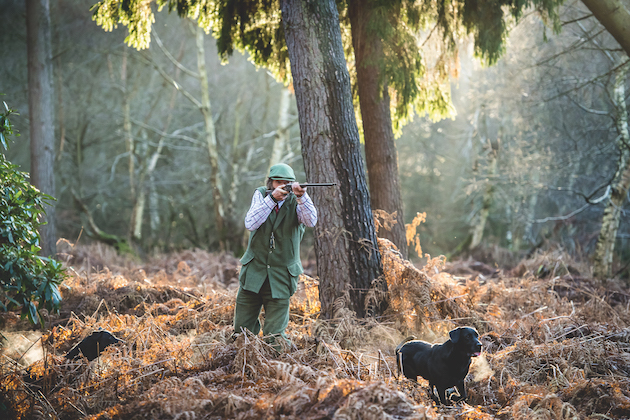 Rob Swift takes a shot
Rob Swift takes a shot
Anyone with even a vague interest in live quarry shooting will be aware that there is an ongoing conversation about the continued use of lead shot.
The centre of gravity of this debate has recently shifted away from lead’s toxicity when scattered into the wider environment. This is because two major supermarkets have announced their future intention only to sell game shot with non-lead alternatives.
Despite them selling a relatively small percentage of the UK’s shot game, I suspect it is an insight into what their consumer research has been telling them. Major supermarkets do not take decisions on gut instinct. And as a consequence, we must all take note.
The shooting of game is not an end in itself, it is the beginning of the process of a meal for family and friends. If it ends up solely as a by-product of a rural entertainment industry, we are lost. There is a great deal of misinformation about the use of steel shot. It is little wonder that the average shooter is now hopelessly confused by conflicting advice.
To understand your position as a side-by-side user — and I suspect you are rather fond of using your elegant, possibly handmade shotgun — you must first know that there are currently two types of steel shot. These are standard steel and high-performance steel. High-performance steel can only be used in barrels that have been proofed for its use. There is only one proof mark that need concern us here and it is the fleur- de-lis stamp — the Prince of Wales’ crest. Some people mistake the proof mark of two crowns above SUP for ‘superior proof’ to be a steel shot proof mark. It is not, and I have seen this mistake made even by experienced members of the gun trade.
Standard steel can go through most nitro-proofed guns, even a side-by-side. Standard steel is 32g or smaller and shot sizes up to and including English No4s. BASC stated recently and in public that standard steel can go through any choke, but I would be reluctant to test this theory for several reasons.
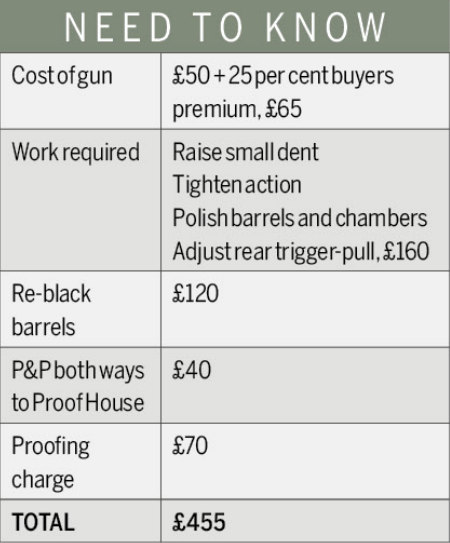
First, there is a modern tendency to over-choke our guns for normal game shooting, which is unnecessary even with lead. With steel, there is little need for anyone to use tighter than half-choke. Steel pellets do not deform on their way down the barrel so pattern better than lead. The exceptions to all of this are Damascus barrels. If you have a Damascus-barrelled gun, even a nitro-proof one, I would advise against steel.
BASC advice has changed. Previously it was no tighter than half-choke for steel shot. Now it is no tighter than half-choke for anything larger than BB shot. This is as a result of continued research by cartridge manufacturers.
A major drawback for potential side-by-side users of steel shot is the limited choice of shot weights. Recoil is directly proportionate to the weight of the gun. A 32g load through a 6 ½lb side-by-side is not an enjoyable experience. There are very few 28g 12-bore steel loads around.
There are two more drawbacks for side-by-side users. There are only two biodegradable wads for steel on the market: Eley’s newly launched Pro Eco Wad which is a standard steel load, and Gamebore’s Silver Steel.
Many traditional side-by-sides are chambered for 65mm cartridges but there are no 65mm steel loads on offer. It is possible to get your gunmaker to bore out the chamber to 70mm but such a barrel alteration will require the gun to be reproofed.
What we are looking for is a standard performance 28g No4 for pheasants or No5 for partridges with a bio-degradable shot cup that will adequately protect our barrels from scoring. I hope it is not too far off.
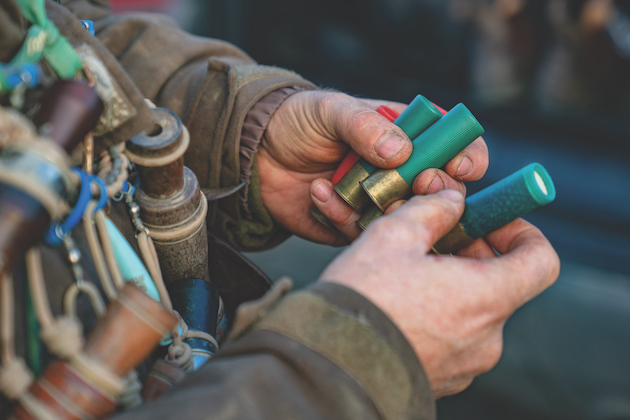
Is it time to choose steel over lead shot?
The alternative is reproofing to high-performance steel. And it is possible. There are some key questions, though: can a gun not designed for high-performance steel be modified with steel-proofing to shoot it safely? Can this be achieved for less money than buying a new Turkish gun with the fleur-de-lis proof mark that will shoot high-performance steel out of the box?
And lastly, how do you actually go about submitting one for proof if you are not in the gun trade?
The gun I have chosen has been a stalwart of the foreshore for more than half a century — an AYA 12-bore boxlock non-ejector. It satisfied the criteria I set after taking advice. It must be: a) affordable; b) strongly built, preferably 3in magnum to start with; c) have open chokes (choke alteration would have increased costs); d) have relatively clean barrels.
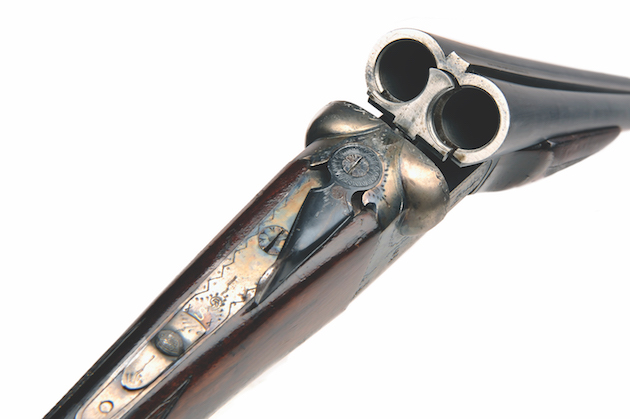
It may be possible to get your beloved side-by-side reproofed for steel shot for a modest sum, unless it has Damascus barrels
My advice on this subject came from gunmaker Scott Wilson, who is also gunsmith in residence for Holts. “To answer your first question — yes, the Proof House will accept guns not made for high-performance steel shot for reproofing to take it. The barrels must first pass inspection, though, and if they are too tightly choked they will be rejected straight away,” he said.
“This AYA is true cylinder in both barrels. The barrels have been shortened and the choked parts cut away, but some small dents will need to be raised. It will also need to have the action tightened a bit and the bores and chambers polished.
“The gun will need to be struck off and filed up because with some Spanish guns the exterior surface of the barrel can appear rivelled [a rippled appearance] even though the bore is good. This may not be the case with other AYAs in better condition, so striking off for proofing and then re-blacking may not always be necessary. The cost of that would be about £160. The cost of re-blacking is about £120.”
So far, so affordable. Then there is shipping to and from the Proof House — it should be around £40 — which can be arranged through your local registered firearms dealer.
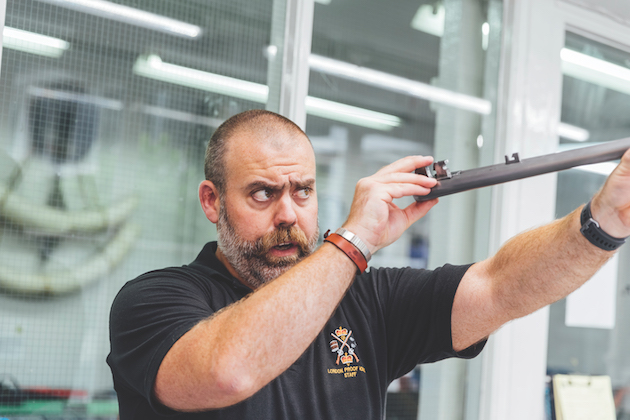
The Proof House will carry out checks to ensure the gun is able to fire steel safely
If you already own the gun there is a cost saved, though the cost of the work required may vary. Holts’s last sealed bids auction had more than 3,000 lots to choose from.
This gun cost me £65 including commission — one of the many bargains to be had.
Once it gets to the Proof House the work Scott put into preparing the gun for reproof shows its value. The technicians at the Proof House will examine the gun to see if it is in fit condition for the rigours of the reproofing process — it is not without risk. This will focus mainly on the condition of the barrels but also how tight the barrels are on the action.
My expectations were not high when I tested the new Eley VIP Steel Pro Eco. But I was floored when…
We were deep in a ditch on the Orkneys. There was a tumbling grey northern sky above us and an…
I would like to try steel shot for wildfowling in my 2.5in chambered gun, but I have been told by…
Both barrels are then fired with a charge 30 to 40 per cent higher than standard. Each barrel will have several such shots down it. After this, the gun is then thoroughly re-inspected for any damage. What they are looking for is any distortion to the barrel tubes — bulges or rivelling.
It can be done and for reasonable money if you are particularly attached to a well-made side-by-side.
A cleanly despatched bird by high-performance steel with a biodegradable wad, from a non-ejector gun, out of which you can pick the case for recycling later, might just be the ultimate in free-range, ethical meat. Change is not always something to be feared.
Get the latest news delivered direct to your door
Discover the ultimate companion for field sports enthusiasts with Shooting Times & Country Magazine, the UK’s leading weekly publication that has been at the forefront of shooting culture since 1882. Subscribers gain access to expert tips, comprehensive gear reviews, seasonal advice and a vibrant community of like-minded shooters.
Save on shop price when you subscribe with weekly issues featuring in-depth articles on gundog training, exclusive member offers and access to the digital back issue library. A Shooting Times & Country subscription is more than a magazine, don’t just read about the countryside; immerse yourself in its most authoritative and engaging publication.

